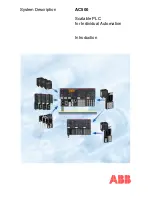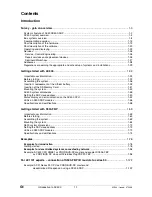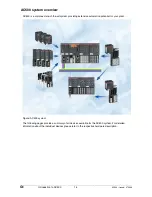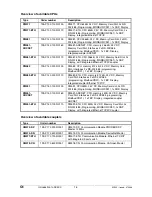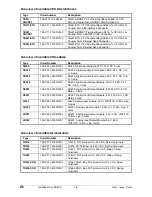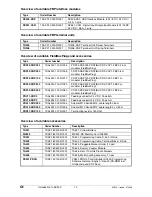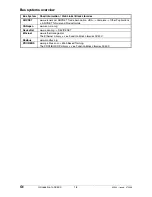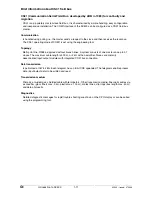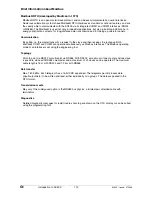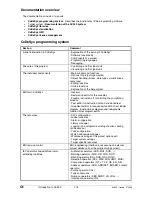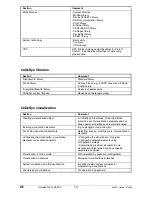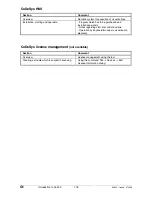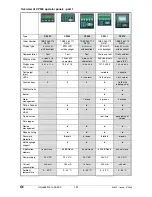
____________________________________________________________________________________________________________
G1
Introduction to AC500
1-9
AC500 / Issued: 07.2006
Brief information about ARCNET
ARCNET (Attached Resource Computer NETwork)
ARCNET is an open, multi-purpose field bus solution with real-time capability. It can be used for multi-
master networking and for programming the AC500 and AC31 controller series, but also for connecting
additional ARCNET subscribers, e.g. PCs via an appropriate interface card (see catalog).
Topology
ARCNET is one of the few networks that can be operated in every conceivable topology. Options include
bus, star, or tree topologies, or mixtures of these. This means that ARCNET can be used for a broad
field of different applications.
Bus assignments
ARCNET operates on the token-passing procedure, where each subscriber has equal rights.
Configuration mechanisms
ARCNET subscribers can freely join and leave during an active runtime session. The system will
automatically configure the available user database.
Security mechanisms
A 16-bit CRC is appended to every data packet, and checked by the recipient. If the token is lost, a
reconfiguration routine will be initiated, and the network will automatically be restructured. Additionally,
diagnostic registers are available.
Physical characteristics
ABB recommends coaxial cables as transmission medium, for direct connection to the CPU. But also
twisted-pair cables or (glass, plastic) fiber-optic cables can be connected via bus converters. The line
lengths that can be achieved without any intermediate amplifiers depend not only on the used medium,
but also on the selected baud rate and the number of subscribers. The ranges per segment vary from
approximately 120 m for a simple two-wire bus, up to 3 km for fiber-optics, in each case at 2.5 MBit/s. By
providing appropriate hubs, different topologies and transmission media can be combined with each
other and the transmission distance can be increased. The coaxial cables used are a type with 93 Ohm,
e.g. RG 62. The permissible twisted-pair cables are specified in IEEE 802.3i-1990. At 2.5 MBit/s and with
coaxial cables, for example, the maximum length of a bus segment is 300 m with eight subscribers and
without a hub. With twisted-pair cables, under the same conditions, a maximum length of approximately
120 m can be achieved. The maximum transmis-sion length depends on the number of connected
subscribers. With coaxial cables, a maximum of 16 km can be achieved; with twisted-pair cables
approximately 6 km, in each case at 2.5 MBit/s. The fiber-optic link provides the highest degree of
interference immunity. With glass fiber-optics, distances of up to 3 km are possible at 2.5 MBit/s; with
plastic fiber-optic cables only small distances of up to approximately 100 m. The baud rate plays no
significant role in fiber-optic cable transmission. Here, the range can as well be extended using hubs.
Diagnostics
Detailed diagnostic messages for rapid trouble-shooting are shown on the CPU display or can be called
using the programming tool.
ARCNET – the functionality at a glance
• Guaranteed collision-free data transmission, guaranteed response times and real-time capability thanks
to token-passing
• Large network dimensions: network length 300 m, with amplifier max. 16 km
• Secure, thanks to checksums in the data packet and handshake protocol between transmitter and
receiver
• Variable network structure: bus, tree and star topologies are possible, plus any desired mixtures of them
• Variable networking media, coaxial cables, twisted-pair cables and fiber-optic cables can be mixed
• Automatic subscriber log-on and log-off; the network automatically incorporates new stations in the ring
and cancels them as well
• Master-master access: the subscriber that holds the token is the master. With up to 255 masters at the
same network
• Data transmission rate of max. 2.5 MBit/s
• ARCNET is configured and programmed using the AC500 Control Builder engineering tool

